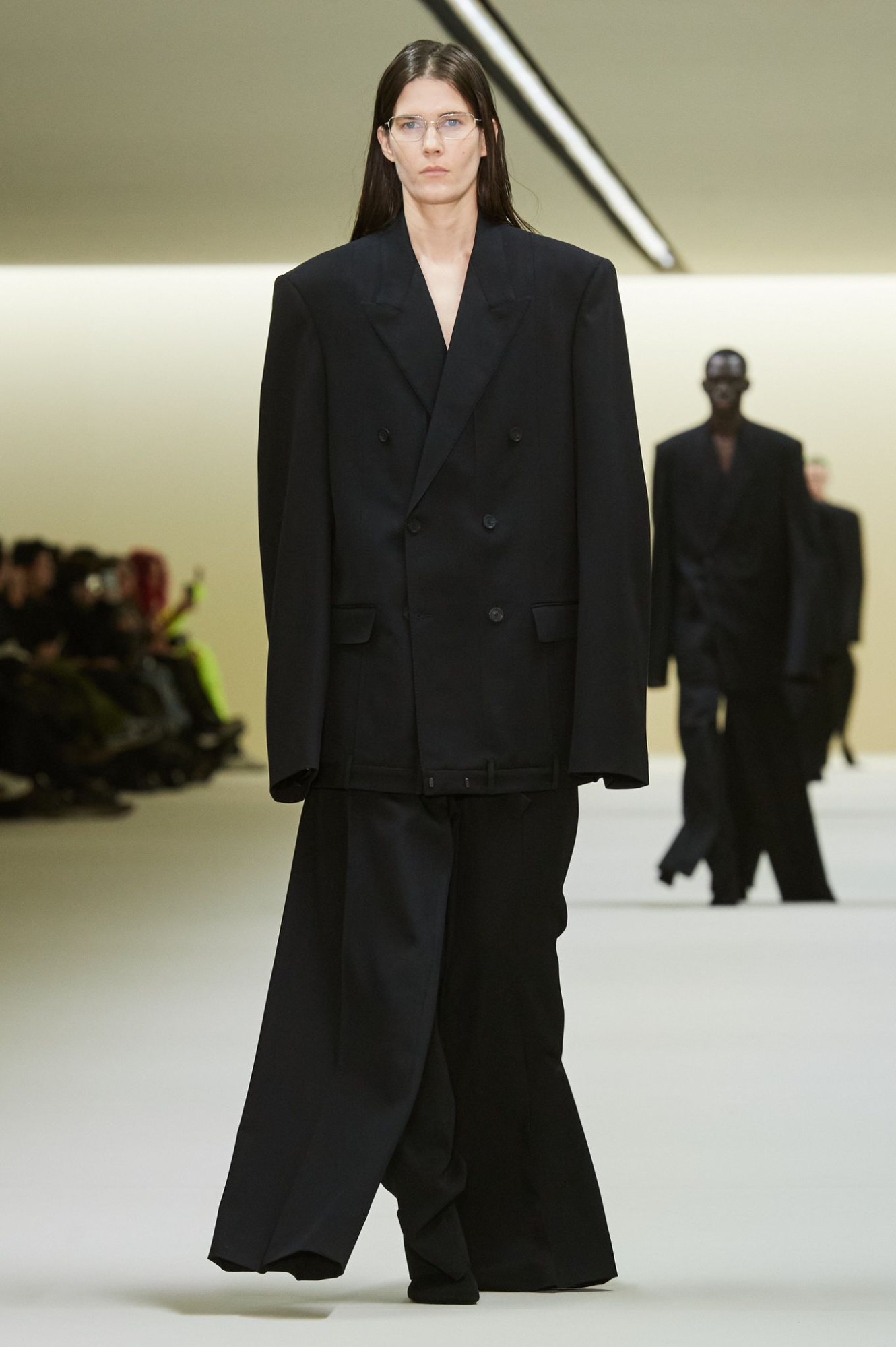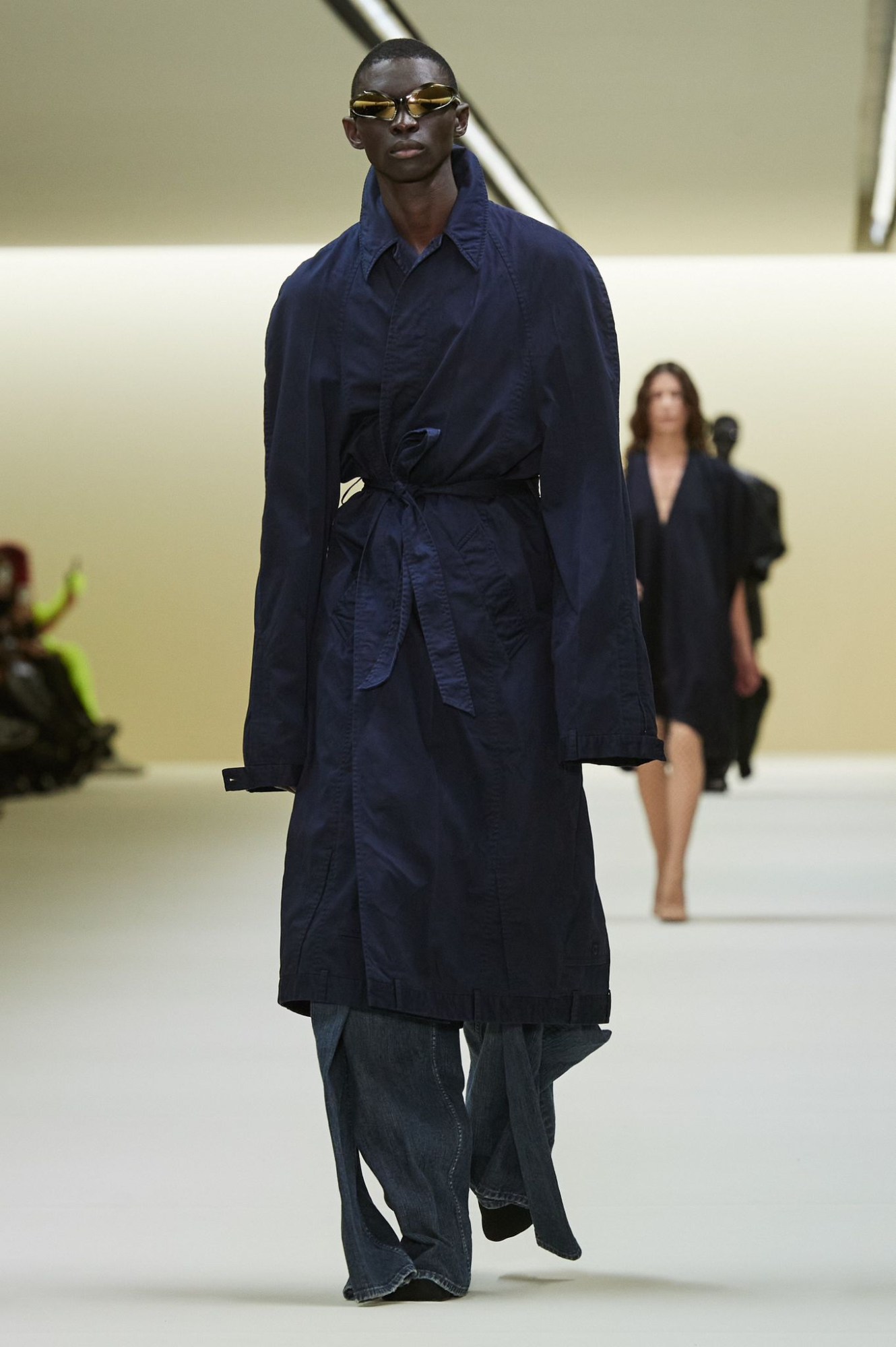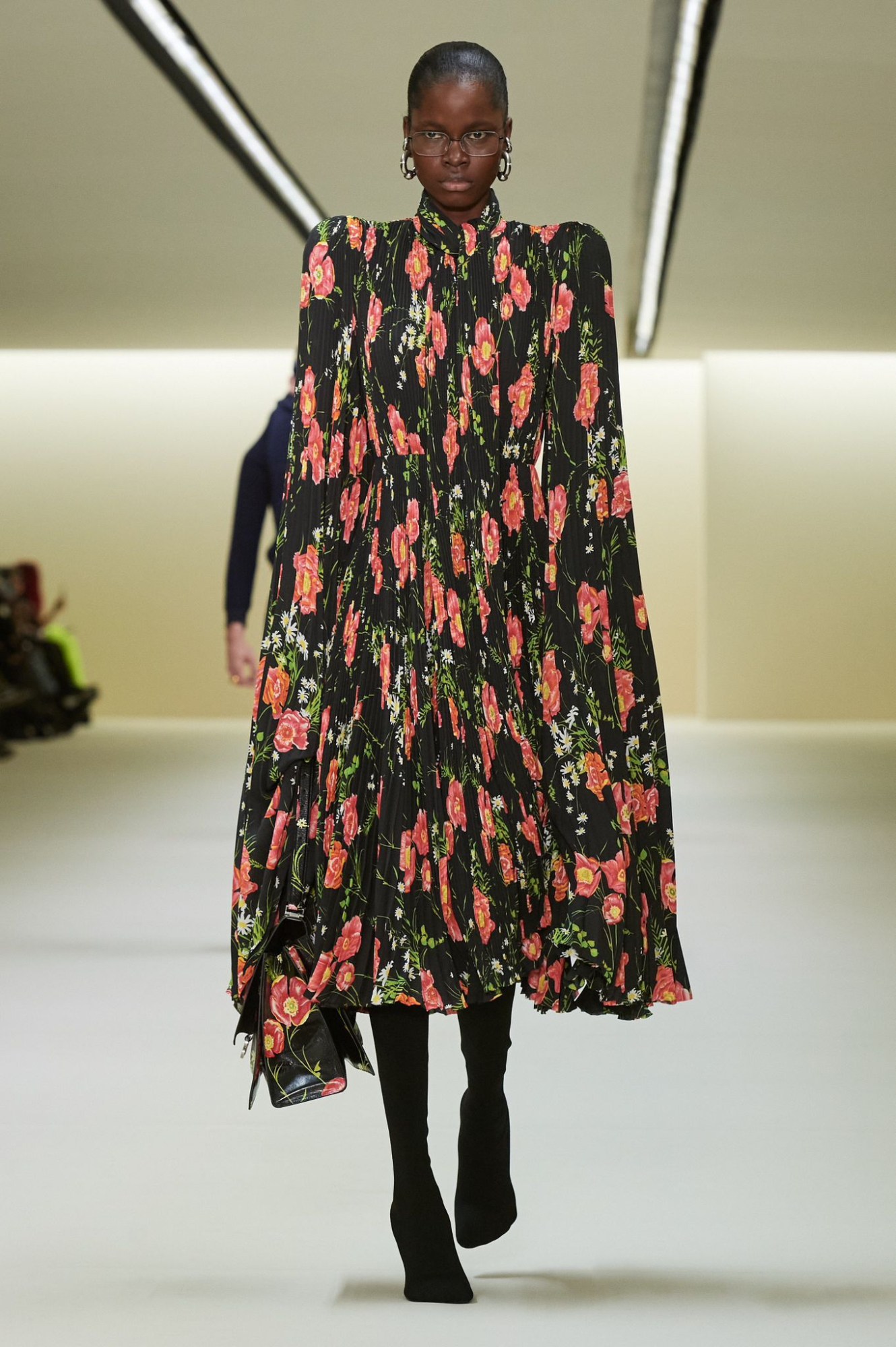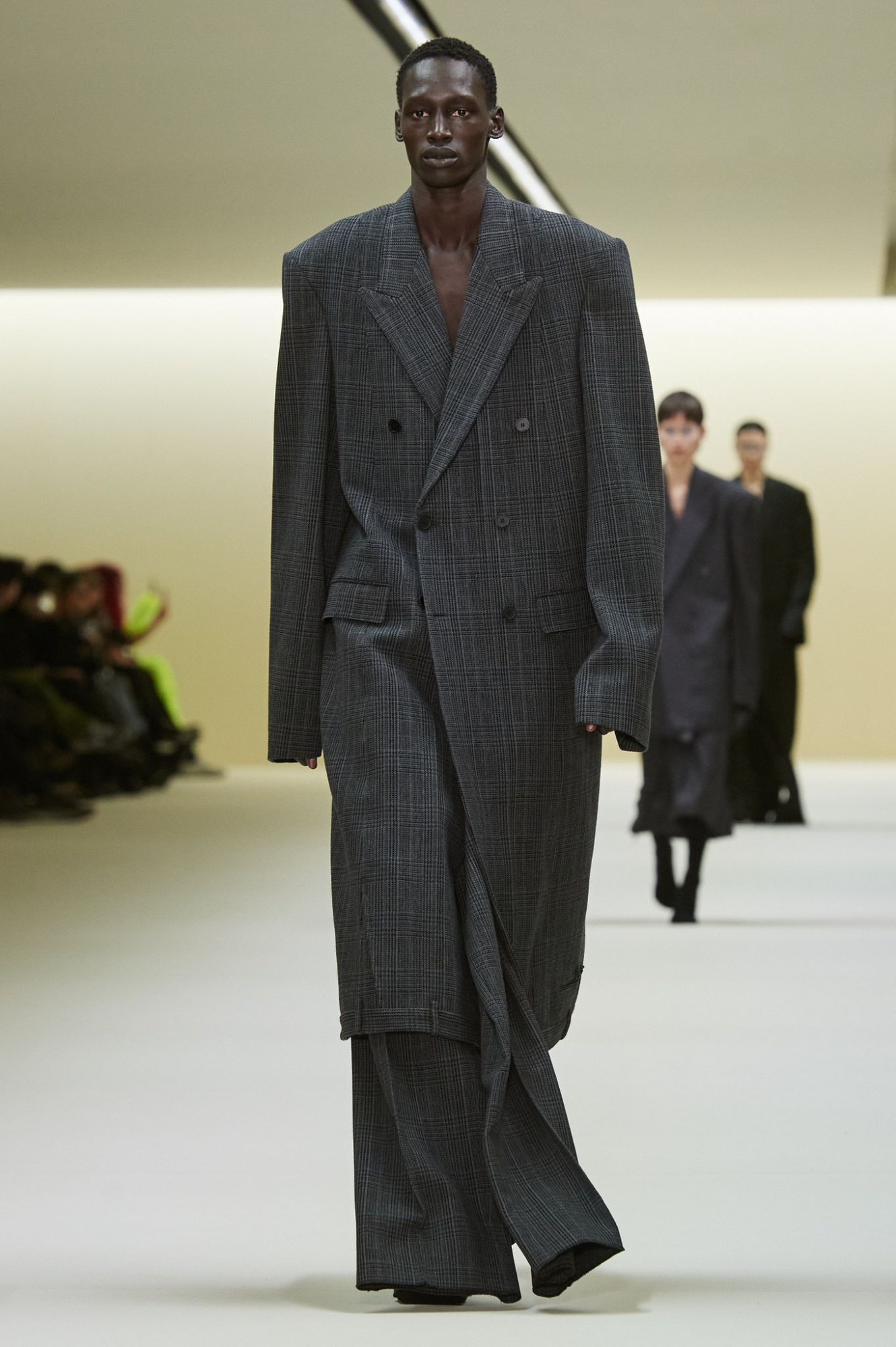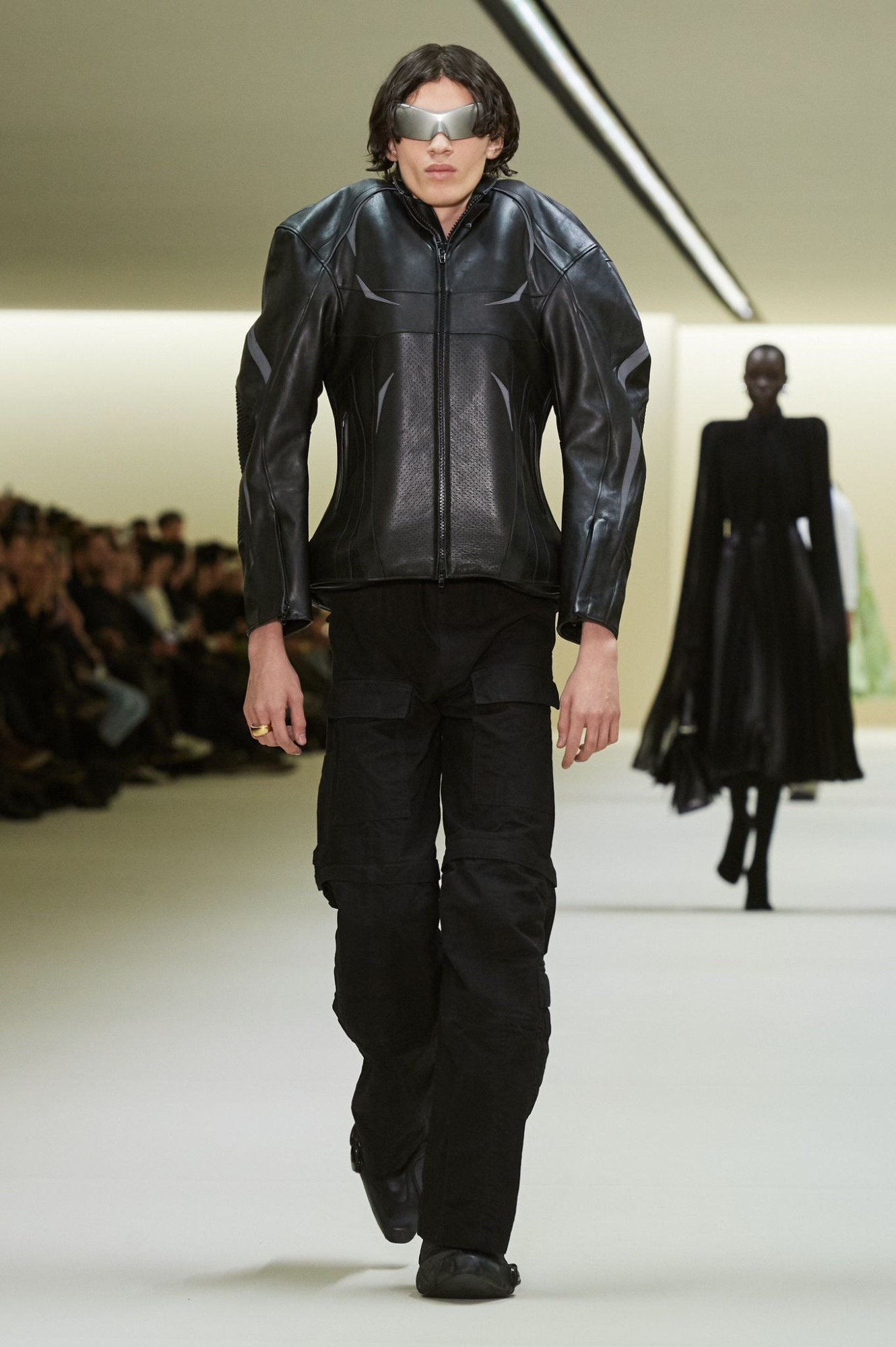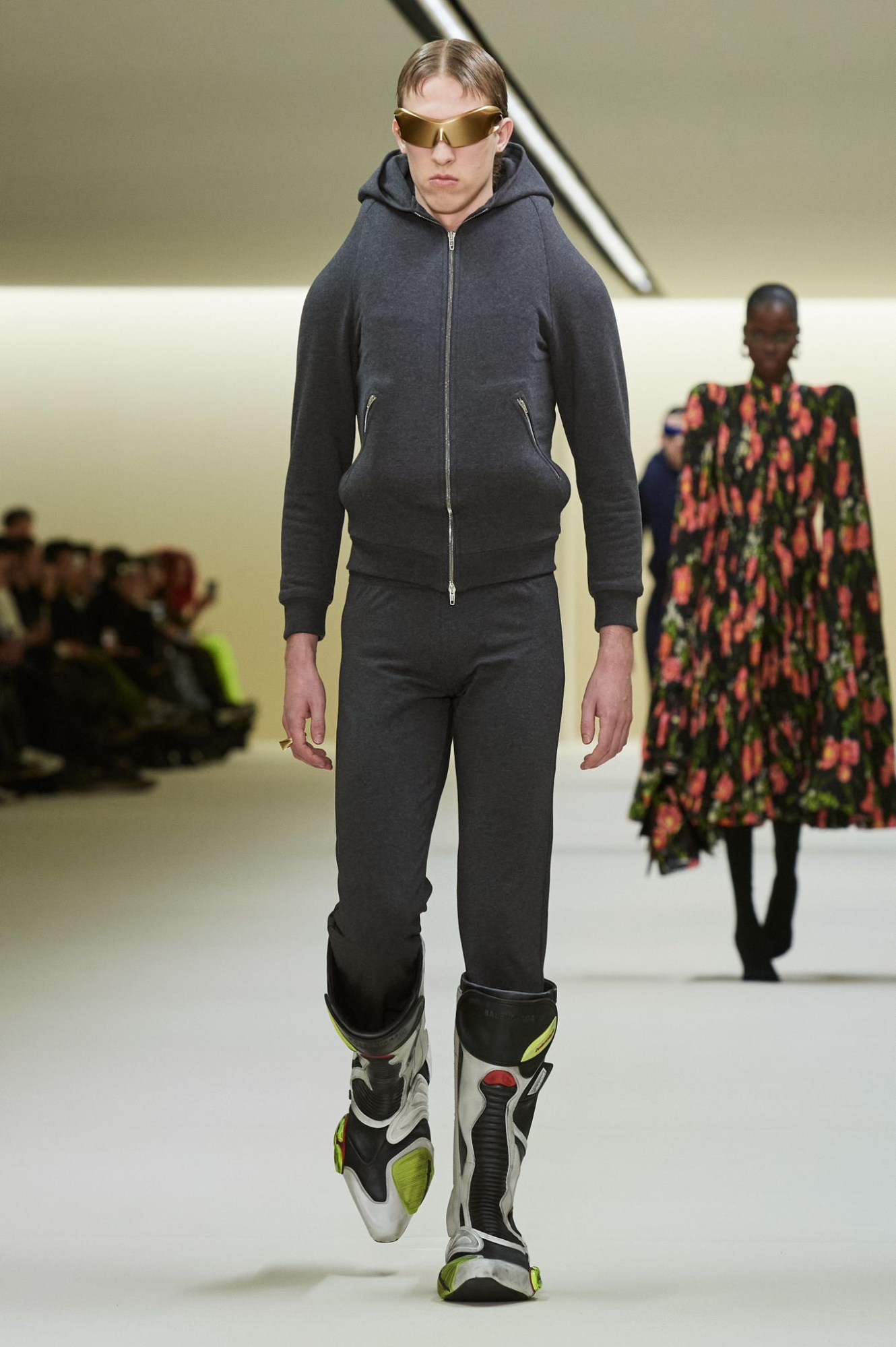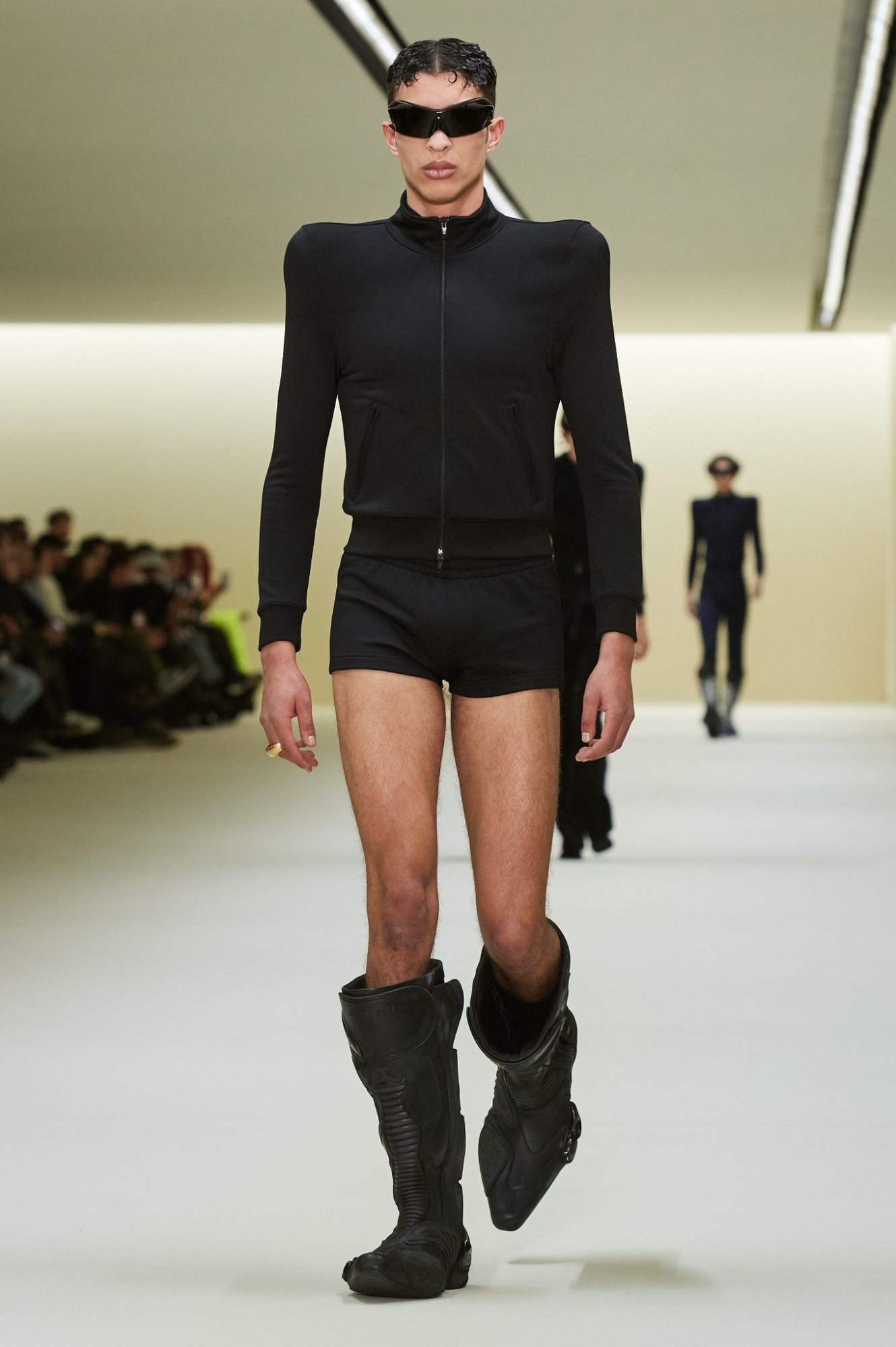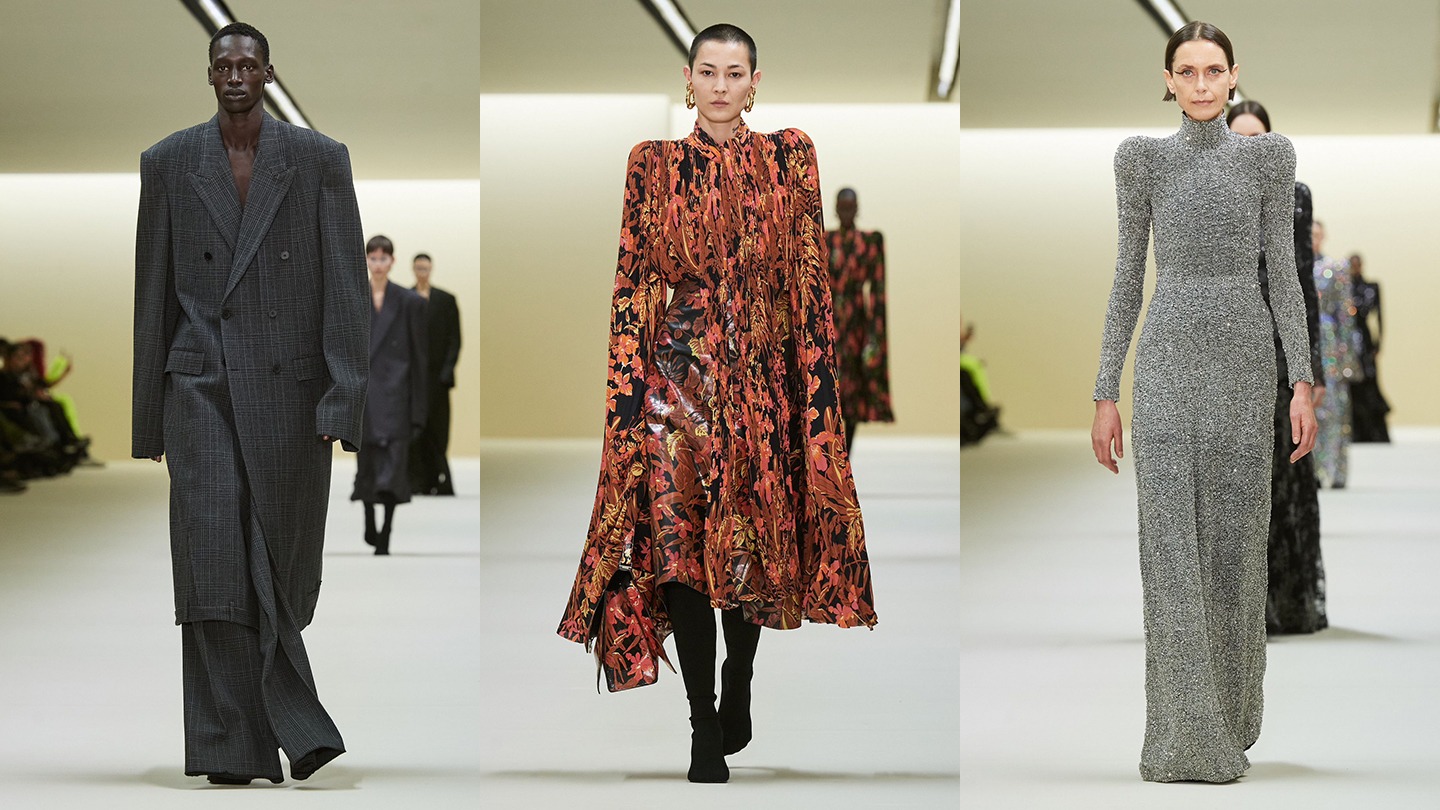Balenciaga is back. For reasons that need no explanation, the fashion house’s latest show was a reset, with the anticipation leading up to it more commonly experienced when a designer is about to make a debut. It was a bit like a do-over; a chance to set the record straight. The simple paper invitation was a dressmaking pattern, the setting itself a warmly-lit white space in the subterranean bowels of the Carrousel des Louvre shopping centre. And, though the location may have been underground, the collection felt like coming up for air. Demna – a man who needs no introduction – is a designer who has the hard task of restoring his employer’s reputation, and he is done with fashion-as-entertainment. He is going back to making clothes.
The timing felt prescient; almost overdue. In recent months, the fashion industry has been having broader conversations about the purpose of its shows, which seem to be snowballing in scale with more gimmicks and branding than ever before. In every city, a handful of designers have been responding by going back to the basics of dressmaking, presenting collections of intelligently-designed, well-made clothes that cut through the noise. There isn’t a better place to have that conversation than at Balenciaga, the house founded by perhaps the greatest dressmaker of the 20th century, and which is now helmed by a man who has changed both the shape of fashion and how it is communicated. “Fashion has become a kind of entertainment, but often that part overshadows the essence of it, which lays in shapes and volumes, silhouettes, the way we create relationships between the body and the fabric, the way we make shoulder lines and armholes, the way clothes have the ability to change us,” Demna wrote in a letter placed on each of the office-chair seats at the show.
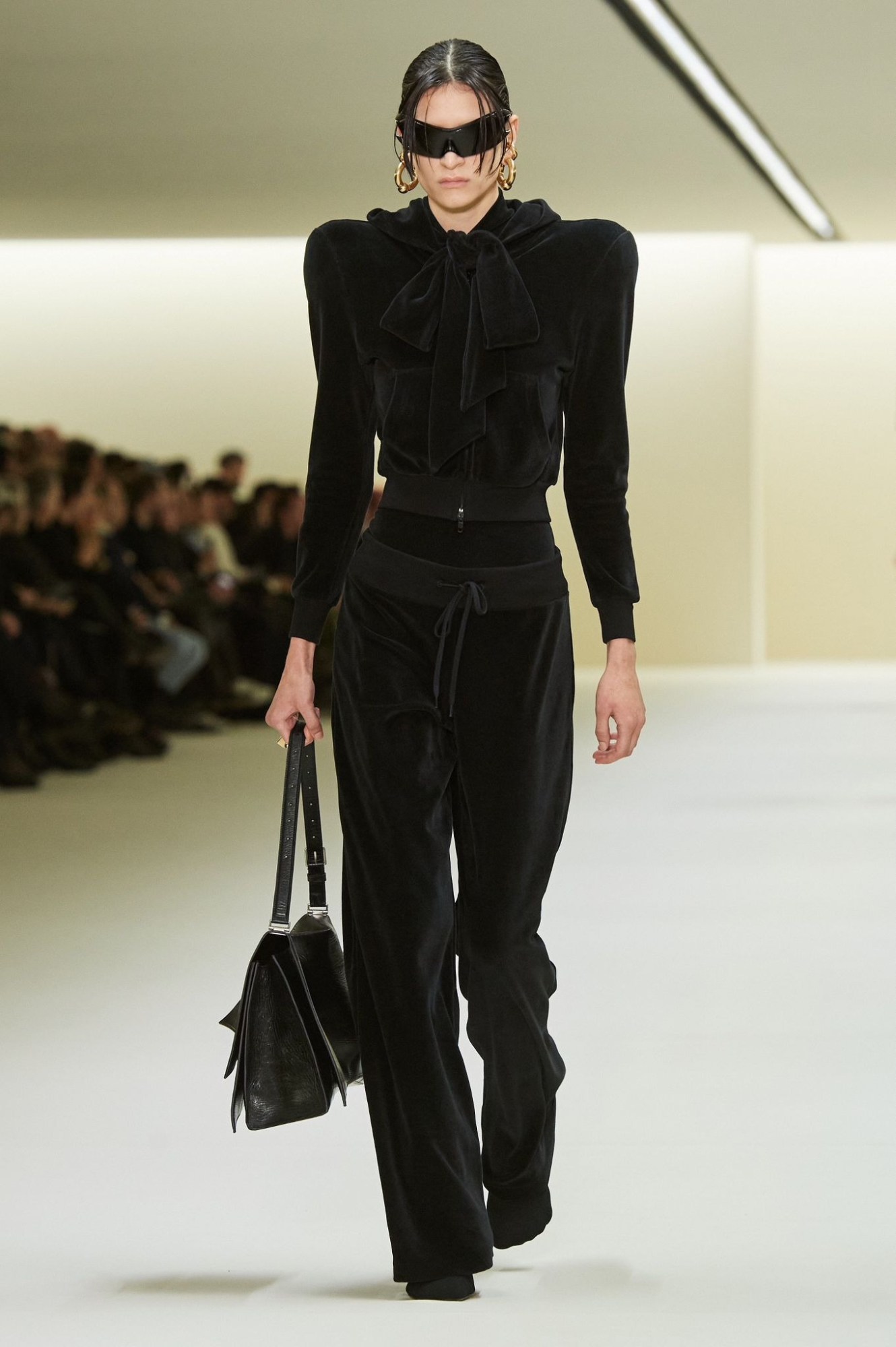
Demna began working on this collection back in October, before the scandal that ensued. He had been wanting to scale back the larger-than-life spectacles he was becoming known for for quite some time — ever since the snowstorm show he staged this time last year. However, what happened in November — the release of two advertising campaigns that prompted a widespread furore around child abuse — only made the impetus for change all the more urgent. In many ways, this show offered a chance for him to reset the brand’s values. “I felt a little bit frustrated because I felt like I betrayed my true value, which is making clothes, because people wouldn’t see the clothes anymore, they would only see the set design and talk about that,” he explained backstage of Balenciaga’s new chapter, which he said will be all about the clothes going forward. “The idea was to really go away from that and really kind of go to square one for me, which is making clothes and putting that into focus.”
The black suits may have seemed uncomplicated and oversized at first but, upon closer inspection, the blazers were created from upside-down trousers, their waistbands forming the hems of jackets. During his time spent at home in December, seeking solace from the frenzy, Demna returned to making clothes as a way of refocusing his attention – perhaps even as therapy. “I really found that place, that shelter, in cutting, stitching and sewing, and I took a bunch of pants that I basically cut up and decided to make other kinds of clothes, like jackets and coats. It became the tailoring part of the collection,” he explained. His mother reminded him of the first piece of clothing he ever made, as a six-year-old with the help of a tailor neighbour, which was a pair of tailored trousers with pleats. “Somehow, it almost felt like I needed to deconstruct that and construct something new out of it, symbolically speaking,” he added.
The rest of the collection was sort of like a greatest-hits album of Demna’s perennial lodestones. There was the sombre black tailoring, the floral tablecloth dresses, the shrunken tracksuits, the power-dressing eveningwear, the oversized denim, and the giant faux-fur coats. Except, it was all refined to ultra-precise proportions, much more aligned with what Demna has explored through his couture collections. There was also a noticeable absence of logos and exaggerated, almost muscular shoulders. In fact, it seemed like accessories were hiding beneath some of the clothes, concealed by the capes of floating dresses and the stretchy jersey of abbreviated hoodies. A handful of velveteen and jersey tracksuits, skintight and figure-hugging, came with inflatable inserts that established a distorted, bulbous silhouette. It turns out that the idea was based on clothing used in biker gear and equestrian clothing: literally, and symbolically, about protection. They also reminded Demna of the hourglass silhouettes he introduced in his debut collection for Balenciaga in 2016, as well as the cocoon silhouettes that Cristobal Balenciaga pioneered way back when. “It was like two very important silhouettes for me and for Balenciaga in one garment,” he pointed out.

The show closed with something we haven’t seen from Demna’s ready-to-wear collections before: a sequence of all-out, floor-skimming gowns in blinding embellishment and graphic lace. You might be surprised to learn that this is not couture. Demna was quick to point out that Balenciaga’s ready-to-wear is still very distinct from its haute couture, which will continue as scheduled in June. “The process of making it actually is very different and it would be hypocritical to put couture and ready to wear together,” he explained. “I want to keep that separate because couture is a lot about heritage and how I modernise it.” Instead, here he wanted to show something that people don’t tend to associate with him: romance and classicism, but twisted with modernity. “That’s something that I really wanted to include in the show because I wanted to show all the facets of who I am as a designer, not just the fashion and the tailoring. These are industrialised garments, not made in the couture way.” He went on to hint that he’s interested in developing that new chapter more.
You get the sense that this may have been the hardest show of Demna’s career, a make-or-break moment to tell the world what he’s all about, to put things right and start over. And you’ve got to give it to him — he knows how to make excellent clothes. The second thing he wanted to focus on, after dressmaking? “Desirability,” he asserted. After all, his joy doesn’t just come from making clothes, but the pleasure derived from us in wearing them. Sometimes, that’s entertaining enough.
